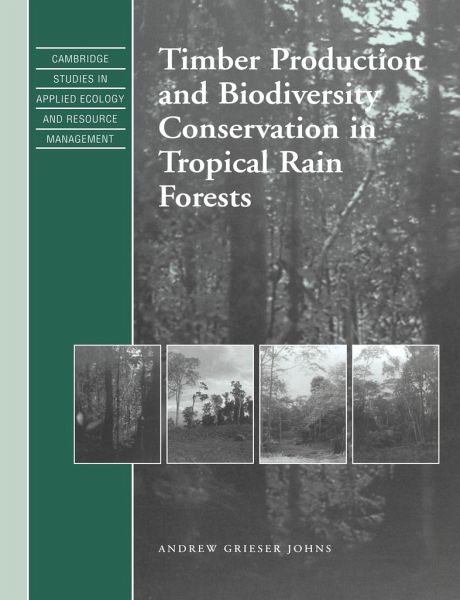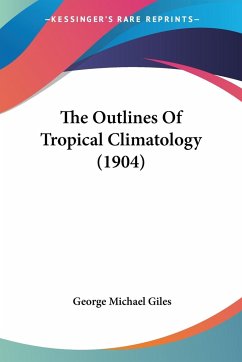
Timber Production and Biodiversity Conservation in Tropical Rain Forests
Versandkostenfrei!
Versandfertig in 1-2 Wochen
47,99 €
inkl. MwSt.

PAYBACK Punkte
24 °P sammeln!
How timber production and tropical biodiversity conservation can be balanced.Timber production is often the most economic form of land use in areas of tropical forest: forest preservation is rarely so. The area of tropical forest reserved for timber production exceeds that of National Parks and other preserved areas by a ratio of at least 8:1. Although often poorly managed to date, production forests have the potential to support a high percentage of natural forest biodiversity. They have a vital role to play in conservation strategies. This book attempts to bridge the current gap between cons...
How timber production and tropical biodiversity conservation can be balanced.
Timber production is often the most economic form of land use in areas of tropical forest: forest preservation is rarely so. The area of tropical forest reserved for timber production exceeds that of National Parks and other preserved areas by a ratio of at least 8:1. Although often poorly managed to date, production forests have the potential to support a high percentage of natural forest biodiversity. They have a vital role to play in conservation strategies. This book attempts to bridge the current gap between conservation requirements and commercial interests, indicating the possibilities for integrated management of tropical forests. The aim is to develop a justification and practical approach for the management of production forest as a supplement to totally-protected forest in the conservation of tropical biodiversity.
Table of content:
Foreword Jeffrey Burley; Preface; Explanatory note; 1.The issues; 2. The history and development of tropical forestry; 3. Changes in the physical environment; 4. Forest regeneration and gap dynamics; 5. Responses of individual animal species; 6. Responses of species assemblages; 7. Using ecological data in forest management planning; 8. Intervention to maintain biodiversity; 9. Field procedures; 10. The future; Bibliography; Index.
Timber production is often the most economic form of land use in areas of tropical forest: forest preservation is rarely so. The area of tropical forest reserved for timber production exceeds that of National Parks and other preserved areas by a ratio of at least 8:1. Although often poorly managed to date, production forests have the potential to support a high percentage of natural forest biodiversity. They have a vital role to play in conservation strategies. This book attempts to bridge the current gap between conservation requirements and commercial interests, indicating the possibilities for integrated management of tropical forests. The aim is to develop a justification and practical approach for the management of production forest as a supplement to totally-protected forest in the conservation of tropical biodiversity.
Table of content:
Foreword Jeffrey Burley; Preface; Explanatory note; 1.The issues; 2. The history and development of tropical forestry; 3. Changes in the physical environment; 4. Forest regeneration and gap dynamics; 5. Responses of individual animal species; 6. Responses of species assemblages; 7. Using ecological data in forest management planning; 8. Intervention to maintain biodiversity; 9. Field procedures; 10. The future; Bibliography; Index.














